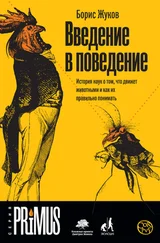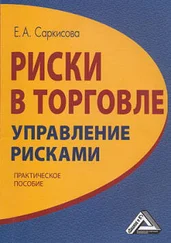DeMiguel V., Garlappi L., Uppal R. (2009). Optimal versus naive diversification: How inefficient is the 1/ N portfolio strategy? Review of Financial Studies 22, 1915–1953.
Dewey J. (1929). The quest for certainty. New York: Minton, Balch and Co.
Dijksterhuis A., van Knippenberg A., Kruglanski A. W., Schaper C. (1996). Motivated social cognition: Need for closure effects on memory and judgments. Journal of Experimental Social Psychology 32, 254–270.
DiPrete T. A. (2007). Is this a great country? Research in Social Stratification and Mobility 25, 89–95.
Djulbegovic M., Beyth R. J., Neuberger M. M., Stoffs T. L., Vieweg J., Djulbegovic B., Dahm P. (2010). Screening for prostate cancer: Systematic review and meta analysis of randomized controlled trials. British Medical Journal 341, c4543.
Doll R., Peto R., Boreham J., Sutherland I. (2004). Mortality in relation to smoking: 50 years’ observations on male British doctors. British Medical Journal 328, 1519.
Domenighetti G., Casabianca A., Gutzwiller F., and Martinoli S. (1993). Revisiting the most informed consumer of surgical services: The physician-patient. International Journal of Technology Assessment in Health Care 9, 505–513.
Donner-Banzhoff N., Bastian H., Coulter A., Elwyn G., Jonitz G., Klemperer D., Ludwig W. D. (2011). How can better evidence be delivered? In G. Gigerenzer, J. A. Muir Gray (Eds.), Better doctors, better patients, better decisions (p. 215–232). Cambridge, MA: MIT Press.
Doshi P. (2009). Neuraminidase inhibitors: The story behind the Cochrane review. British Medical Journal 330, 1348–1351.
Egidi M., and Marengo L. (2004). Near-decomposability, organization, and evolution: Some notes on Herbert Simon’s contribution. In M. Augier and J. J. March (Eds.), Models of a man: Essays in memory of Herbert A. Simon (p. 335–350). Cambridge, MA: MIT Press.
Ehrenreich B. (2010 ). Bright-sided: How positive thinking is undermining America. New York: Picador.
Einstein A. (undated). Letter to Max Wertheimer. Albert Einstein Archive, Princeton University Library.
Emanuel E. J. (2008). Healthcare, guaranteed: A simple, secure solution for America. New York: Public Affairs.
Enserink M. (2010, December 24). What’s next for disease eradication? Science 330, 1736–1739. doi: 10.1126/ science. 330.6012.1736.
Finkel E. J., Eastwick P. W., Karney B. R., Reis H. T., Sprecher S. (2012). Online dating: A critical analysis from the perspective of psychological science. Psychological Science in the Public Interest 13, 3–66.
Firman D., Quirk K. (2009). Brace for impact. Deerfield Beach, FL: Health Communications, Inc.
Flegal K. M., Graubard B. I., Williamson D. F., Gail M. H. (2005). Excess deaths associated with underweight, overweight, and obesity. Journal of the American Medical Association 293, 861–1867.
Folkman J., Kalluri R. (2004). Cancer without disease. Nature 427, 787. doi: 10. 1038 /427787a
Franklin B. (1745). Letter to a friend (Philadelphia, June 25, 1745). Retrieved from www.bibliomania.com/2/9/77/124/21473/1/frameset.html.
Franklin B. (1779). Letter to Jonathan Williams (Passy, April 8, 1779). In A. H. Smyth (Ed.), The writings of Benjamin Franklin (Vol. VII. p. 281–282). New York: Macmillan.
Friedman D. (2004). Monty Hall’s three doors: Construction and deconstruction of a choice anomaly. American Economic Review 88, 933–946.
Friedman D., Nakhoda A. (2008, August). Monty Hall Problem. Learning and Experimental Economics Projects of Santa Cruz (LEEPS), University of Santa Cruz. Retrieved from leeps.ucsc.edu/misc/page/monty-hall-puzzle/.
Furedi A. (1999). The public health implications of the 1995 «pill scare». Human Reproduction Update 5, 621–626. doi:10.1093/humupd/5.6. 621.
Gaissmaier W. Gigerenzer G. (2012). 9/ 11, act II: A fine-grained analysis of regional variations in traffic fatalities in the aftermath of the terrorist attacks. Psychological Science 23, 1449–1454.
Galesic M., Garcia-Retamero R. (2012). The risks we dread: A social circle account. PLoS ONE, 7, e32837.
Galesic M., Garcia-Retamero R., Gigerenzer G. (2009). Using icon arrays to communicate medical risks to low-numeracy people. Health Psychology 28,
210–216.
Galesic M., Garcia-Retamero R., Gigerenzer G. (2014). Maximizing and satisficing: Personality trait or adaptive strategies? Manuscript, Max Planck Institute for Human Development: Berlin.
Garcia-Retamero R., Galesic M. (2012). Doc, what would you do if you were me? On self-other discrepancies in medical decision making. Journal of Experimental Psychology: Applied 18, 38–51.
Gaskell G., Allansdottir A., Allum N., Corchero C., Fischler C., Hampel, J., et al. (2006). Europeans and biotechnology in 2005: Pattern and trends. Eurobarometer 64.3.
Gawande A. (2009). The checklist manifesto. New York: Metropolitan Books.
Ghosh A. K., Ghosh K. (2005). Translating evidence-based information into effective risk communication: Current challenges and opportunities. Journal of Laboratory and Clinical Medicine 145, 171–180. doi:10.1016/ j.lab.2005.02.006.
Gibson R., Singh J. P. (2010). The treatment trap. Chicago, IL: Dee.
Gigerenzer G. (2000). Adaptive thinking: Rationality in the real world. New York: Oxford University Press.
Gigerenzer G. (2002). Calculated risks: How to know when numbers deceive you. New York: Simon and Schuster (UK version: Reckoning with risk: Learning to live with uncertainty. London: Penguin).
Gigerenzer G. (2004). Dread risk, September 11, and fatal traffic accidents. Psychological Science 15, 286–287 doi:10.1111/j.0956–7976.200 4.00668.x.
Gigerenzer G. (2006). Out of the frying pan into the fire: Behavioral reactions to terrorist attacks. Risk Analysis 26, 347–351. doi:10.1111/ j.1539–6924.2006.00753.x.
Gigerenzer G. (2007). Gut feelings: The intelligence of the unconscious. New York: Viking (UK version: London: Allen Lane/Penguin).
Gigerenzer G. (2008). Rationality for mortals: How people cope with uncertainty. New York: Oxford University Press.
Gigerenzer G. (2011). What are natural frequencies? Doctors need to find better ways to communicate risk to patients. British Medical Journal 343: d6386.
Gigerenzer G., Brighton H. (2009). Homo heuristicus: Why biased minds make better inferences. Topics in Cognitive Science 1, 107–143.
Gigerenzer G., Fiedler K., Olsson H. (2012). Rethinking cognitive biases as environmental consequences. In P. M. Todd, G. Gigerenzer, the ABC Research Group, Ecological rationality: Intelligence in the world (p. 80–110). New York: Oxford University Press.
Gigerenzer G., Gaissmaier W., Kurz-Milcke E., Schwartz L. M., Woloshin S. (2007). Helping doctors and patients to make sense of health statistics. Psychological Science in the Public Interest 8, 53–96.
Gigerenzer G., Galesic M. (2012). Why do single event probabilities confuse patients? British Medical Journal 344, e245. doi:0.1136/ bmj.e245.
Gigerenzer G., Galesic M., Garcia-Retamero R. (2013). Stereotypes about men’s and women’s intuitions: A study of two nations. Journal of Cross Cultural Psychology. doi:10.1177/0022022113487074.
Gigerenzer G., Goldstein D. G. (2011). The recognition heuristic: A decade of research. Judgment and Decision Making 6, 100–121.
Gigerenzer G., Hertwig R., van den Broek E., Fasolo B., Katsikopoulos K. V. (2005). «A 30 % chance of rain tomorrow»: How does the public understand probabilistic weather forecasts? Risk Analysis 25, 623–629.
Читать дальше
Конец ознакомительного отрывка
Купить книгу












